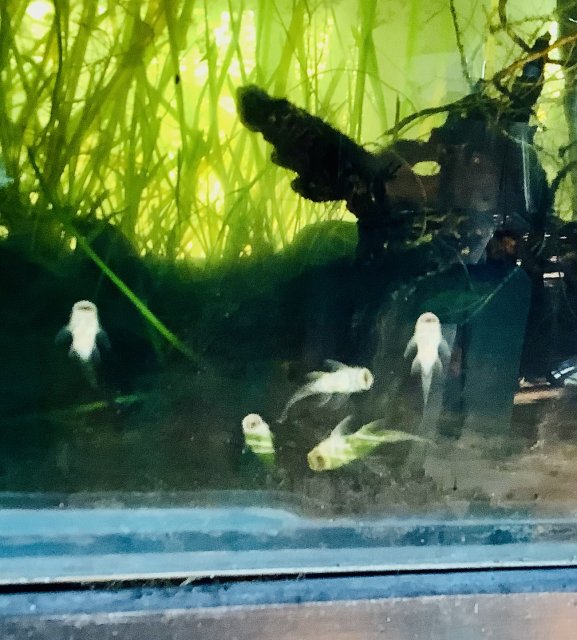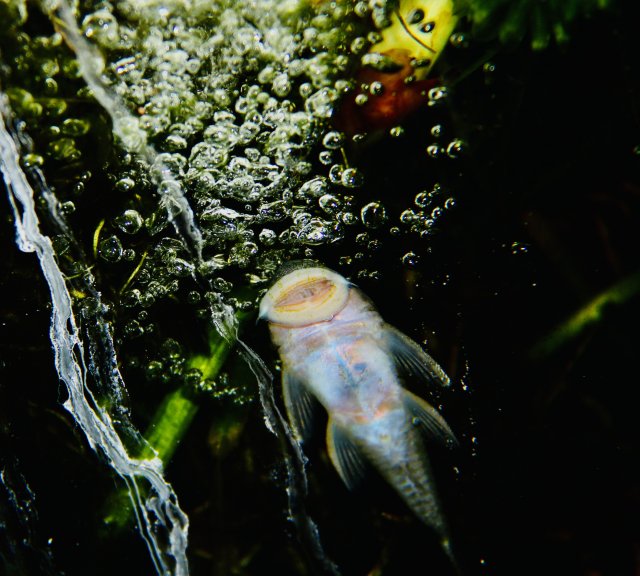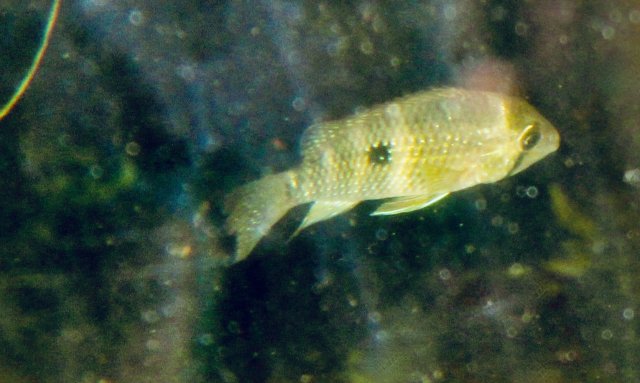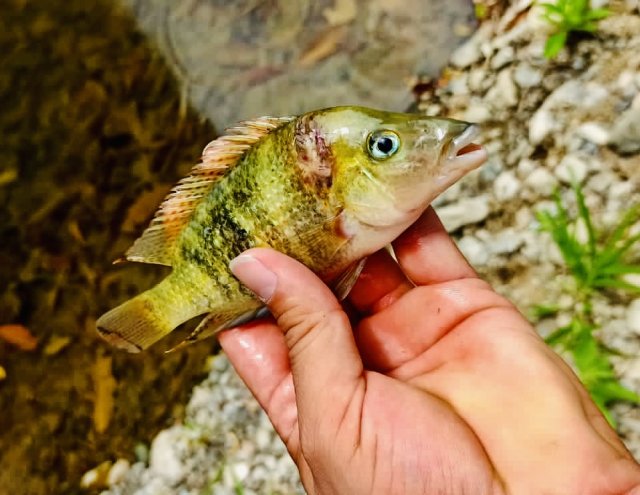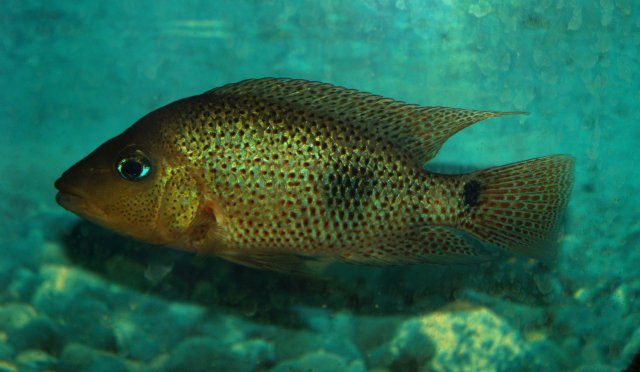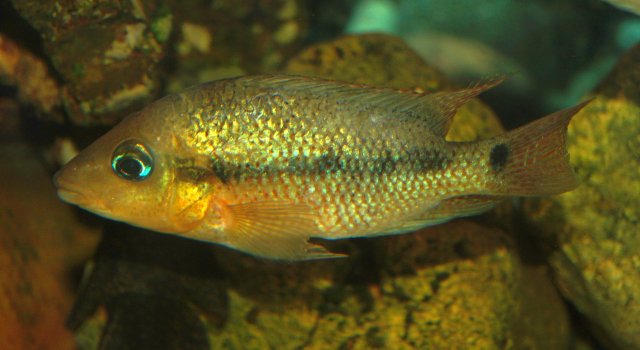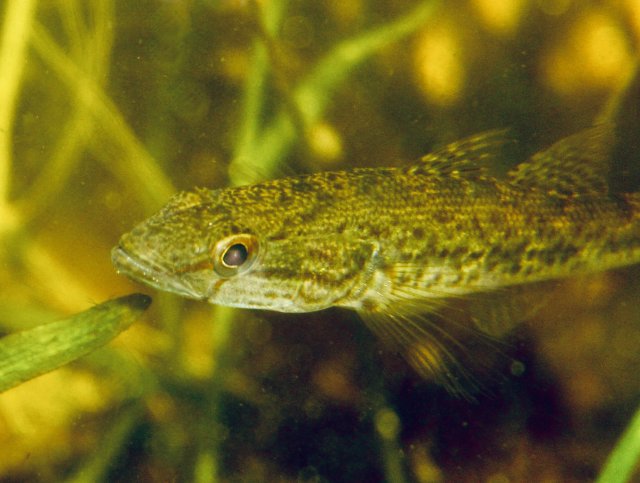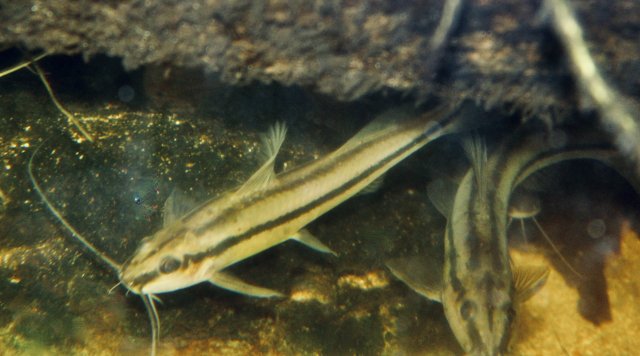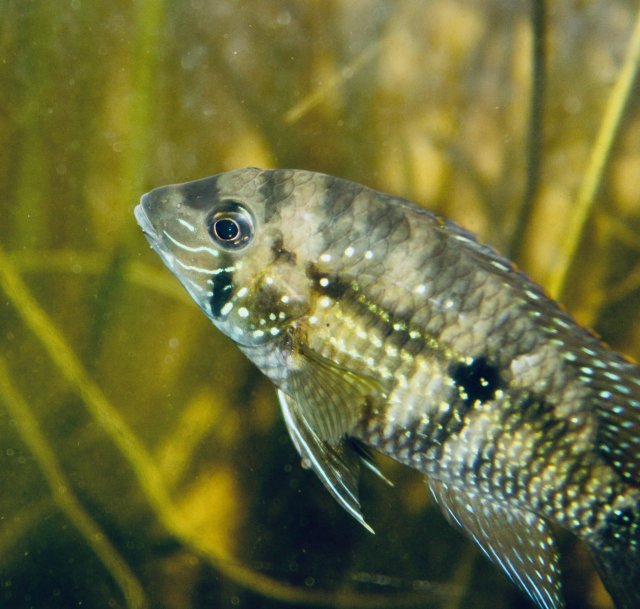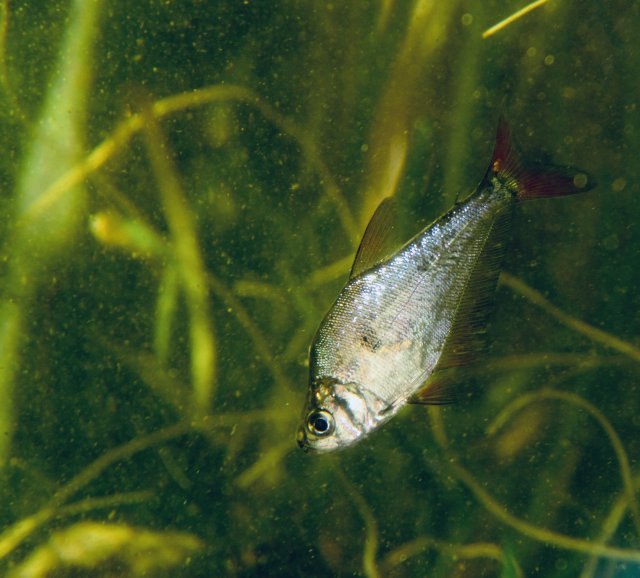The Rio Mamoni is a river in south eastern Panama, about a 1 1/2 hour drive from the landing on the Amador Peninsula where my ferry docks after the half hour cruise from Isla Tabooga where I live.
It is still the dry season, so the Mamoni is about a third its normal size at the moment.
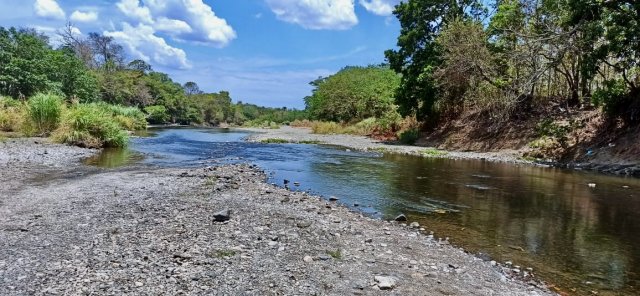
As the photos above and below show, its banks are exposed, and depth is severely lessened
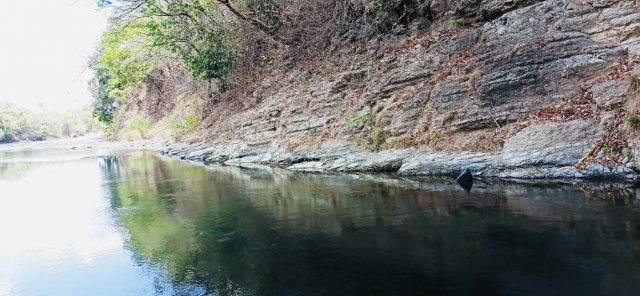
Most of the depth this day ranges from inches, to a little over knee deep, although along the eastern rock wall were some deep trenches.
Tetras were the dominating species in all areas, perhaps 100 tetras for any non-tetra species.
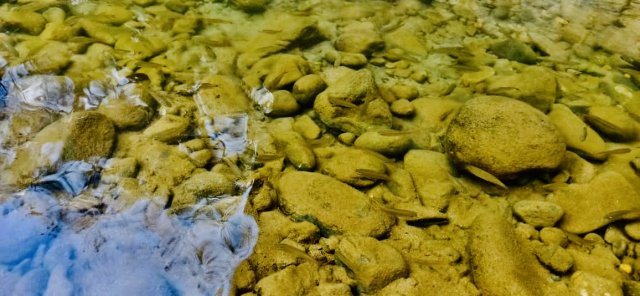
I was able to net 1 cichlid, a juvie Andinoacara coerleopunctatus, in about knee deep water.
There was an injured adult cichlid spotted, although dying that gave us a glimmer of hope other species could be found.
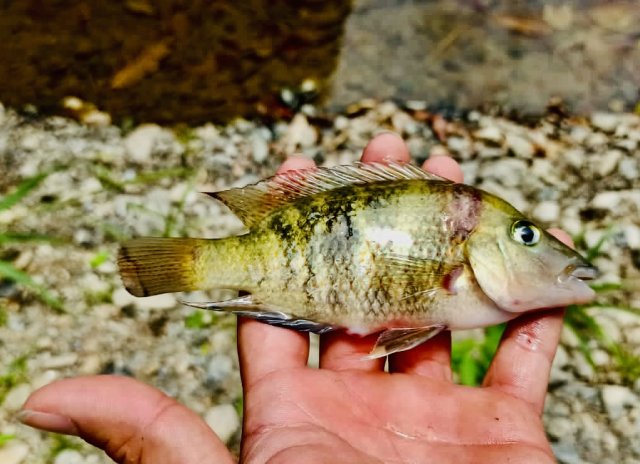
So I started casting into the deeper holes and trenches, and brought five 2" juvie Ancistrus chagresi.
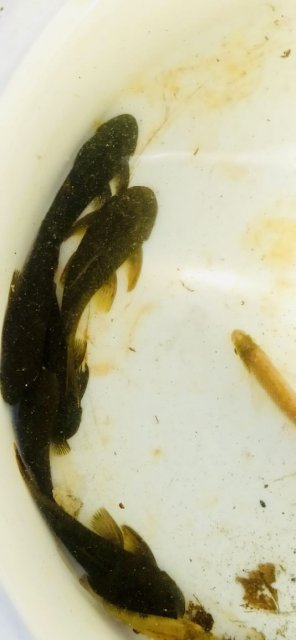
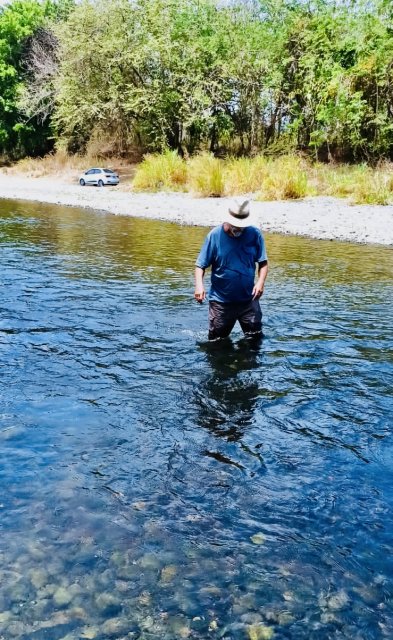
As usual I test the water to determine if its close to where my tank water parameters average, and as usual, nitrates were undetectable, and pH leveled out around 8.2


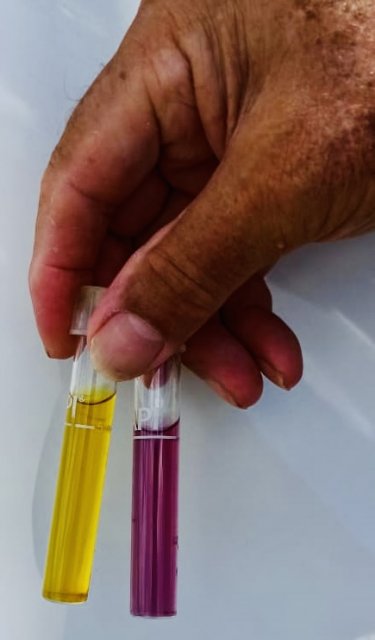
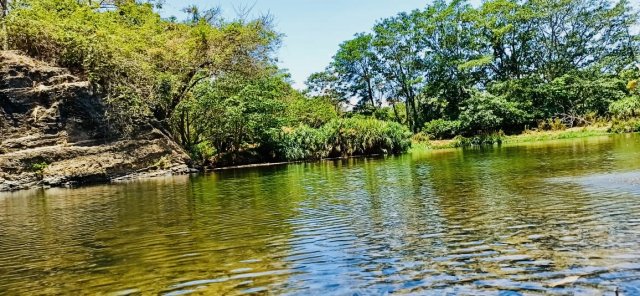
It is still the dry season, so the Mamoni is about a third its normal size at the moment.

As the photos above and below show, its banks are exposed, and depth is severely lessened

Most of the depth this day ranges from inches, to a little over knee deep, although along the eastern rock wall were some deep trenches.
Tetras were the dominating species in all areas, perhaps 100 tetras for any non-tetra species.

I was able to net 1 cichlid, a juvie Andinoacara coerleopunctatus, in about knee deep water.
There was an injured adult cichlid spotted, although dying that gave us a glimmer of hope other species could be found.

So I started casting into the deeper holes and trenches, and brought five 2" juvie Ancistrus chagresi.


As usual I test the water to determine if its close to where my tank water parameters average, and as usual, nitrates were undetectable, and pH leveled out around 8.2




Last edited:



